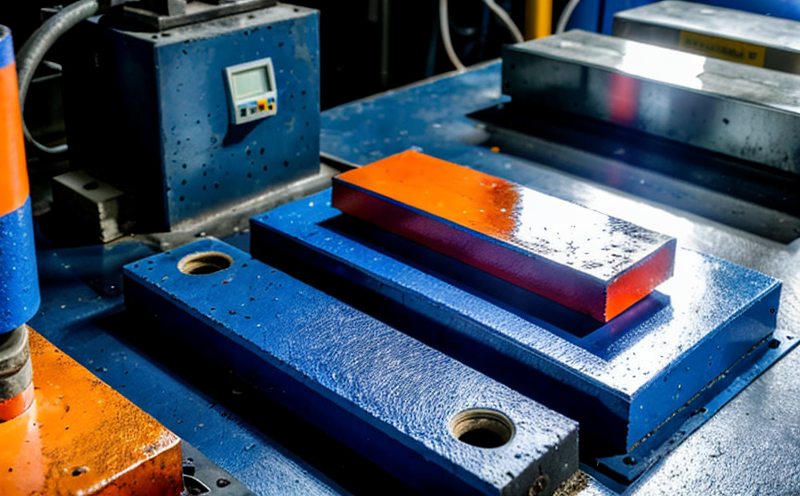Fatigue testing methods for different materials
Unlocking Material Reliability Fatigue Testing Methods for Different Materials
In todays fast-paced industrial landscape, ensuring the reliability and durability of materials is crucial for businesses operating in various sectors. From aerospace to automotive, energy to construction, the demand for high-quality materials that can withstand stress and fatigue has never been greater. As a leading laboratory service provider, Eurolab offers an array of fatigue testing methods tailored to meet the specific needs of different materials.
What are Fatigue Testing Methods?
Fatigue testing methods involve subjecting materials to repeated loading cycles or stresses until failure occurs. This process helps manufacturers and researchers understand a materials resistance to fatigue, which is critical in predicting its lifespan and reliability under real-world conditions. By simulating actual usage scenarios, fatigue testing enables the identification of potential weaknesses and optimization of material properties.
Why Choose Fatigue Testing Methods?
The advantages of using fatigue testing methods for different materials are numerous
Benefits for Manufacturers
Reduced warranty claims By understanding a materials fatigue behavior, manufacturers can minimize warranty claims and associated costs.
Improved product design Knowledge gained from fatigue testing enables the development of more durable products that meet customer expectations.
Cost savings Optimized material selection and processing techniques result in reduced production costs and increased efficiency.
Benefits for Researchers
Enhanced material understanding Fatigue testing provides valuable insights into a materials response to loading cycles, enabling researchers to develop new materials with improved properties.
Improved product development By simulating real-world conditions, researchers can design products that meet specific performance requirements.
Advancements in technology The knowledge gained from fatigue testing contributes to the advancement of industries and fields such as aerospace, energy, and construction.
Benefits for Quality Control
Compliance with regulations Fatigue testing ensures compliance with industry standards and regulations, reducing the risk of product recalls and associated costs.
Improved quality assurance Regular fatigue testing enables manufacturers to identify potential issues early on, ensuring high-quality products that meet customer expectations.
Enhanced reputation Demonstrating a commitment to quality through rigorous testing helps build trust with customers and stakeholders.
Common Fatigue Testing Methods
Eurolab offers a range of fatigue testing methods for different materials, including
Axial Loading (4-Point Bending) This method involves applying loading forces perpendicular to the materials axis, simulating real-world conditions such as compressive stresses.
Rotating Beam Fatigue Suitable for thin specimens, this method applies cyclical loading in a rotating beam configuration, ideal for testing materials under tension or compression.
Axial Torsion This method involves subjecting the material to axial and torsional forces simultaneously, simulating real-world conditions such as pipe bending.
Impact Fatigue Testing This method subjects specimens to high-impact loading cycles, simulating real-world conditions such as drops or falls.
How Do I Know Which Fatigue Testing Method is Right for My Material?
Selecting the most suitable fatigue testing method depends on several factors, including
Material type and thickness
Loading configuration (tension, compression, torsion)
Specimen geometry and size
Desired level of accuracy and precision
Eurolabs experienced team will work closely with you to determine the most appropriate fatigue testing method for your specific material.
QA Frequently Asked Questions
Q What are the typical sample sizes required for fatigue testing?
A Sample sizes vary depending on the testing method, but typically range from a few millimeters to several centimeters in thickness and length.
Q How long does a fatigue test take to complete?
A The duration of a fatigue test depends on various factors, including loading cycles, sample size, and desired level of accuracy. Tests can range from several hours to several weeks or even months.
Q Can I customize the testing protocol to meet my specific requirements?
A Yes, Eurolab offers customized testing protocols tailored to your specific needs and material specifications.
Conclusion
Fatigue testing methods are an essential tool for manufacturers and researchers seeking to unlock material reliability. By partnering with Eurolab, you can ensure compliance with industry standards, reduce warranty claims, and develop products that meet customer expectations. Whether youre optimizing product design or advancing research in a specific field, our range of fatigue testing methods has the solution.
Choose Eurolab as your trusted laboratory service provider for fatigue testing needs.




